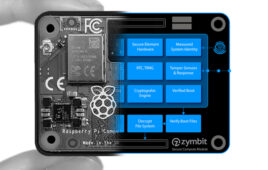A new type of transparent wood that transmits light, and absorbs and releases heat could provide modern architecture with a new way to save on energy costs. The material can withstand heavy loads and is biodegradable, pertinent to being used in eco-friendly homes.
The researchers are presenting their results at the American Chemical Society (ACS) Spring 2019 National Meeting & Exposition.
“Back in 2016, we showed that transparent wood has excellent thermal-insulating properties compared with glass, combined with high optical transmittance,” says Céline Montanari, a Ph.D. student who is presenting the research at the meeting. “In this work, we tried to reduce the building energy consumption even more by incorporating a material that can absorb, store and release heat.”
As economic development rises, so does energy consumption. A lot of this energy is used to light, heat, and cool buildings, and although glass windows can emit light, they don’t store energy when the sun disappears.
In response, lead investigator Lars Berglund, Ph.D., and colleagues at KTH Royal Institute of Technology in Sweden, are presenting their new transparent wood. The team created the wood by removing the light-absorbing material called lignin from the cell walls of balsa wood. They also incorporated acrylic into the porous wood scaffold to reduce light scattering. From these techniques, the researchers could almost see through the material, where it still provided privacy if an entire building was made from it.
Montanari and Berglund also added polyethylene glycol to the de-lignified wood.
“We chose PEG because of its ability to store heat, but also because of its high affinity for wood,” says Montanari. “In Stockholm, there’s a really old ship called Vasa, and the scientists used PEG to stabilize the wood. So we knew that PEG can go really deep into the wood cells.”
PEG starts as a solid but can melt at temperatures of 80 F, which also stores energy in the process.
“During a sunny day, the material will absorb heat before it reaches the indoor space, and the indoors will be cooler than outside,” Montanari explains. “And at night, the reverse occurs –– the PEG becomes solid and releases heat indoors so that you can maintain a constant temperature in the house.”
The researchers hope this new type of material can impact building construction and provide an eco-friendly alternative to buildings other than using plastic, concrete, or glass. They hope the transparent wood will be available in five years for niche applications, and have plans to make the material even more energy-efficient.
Filed Under: Product design




